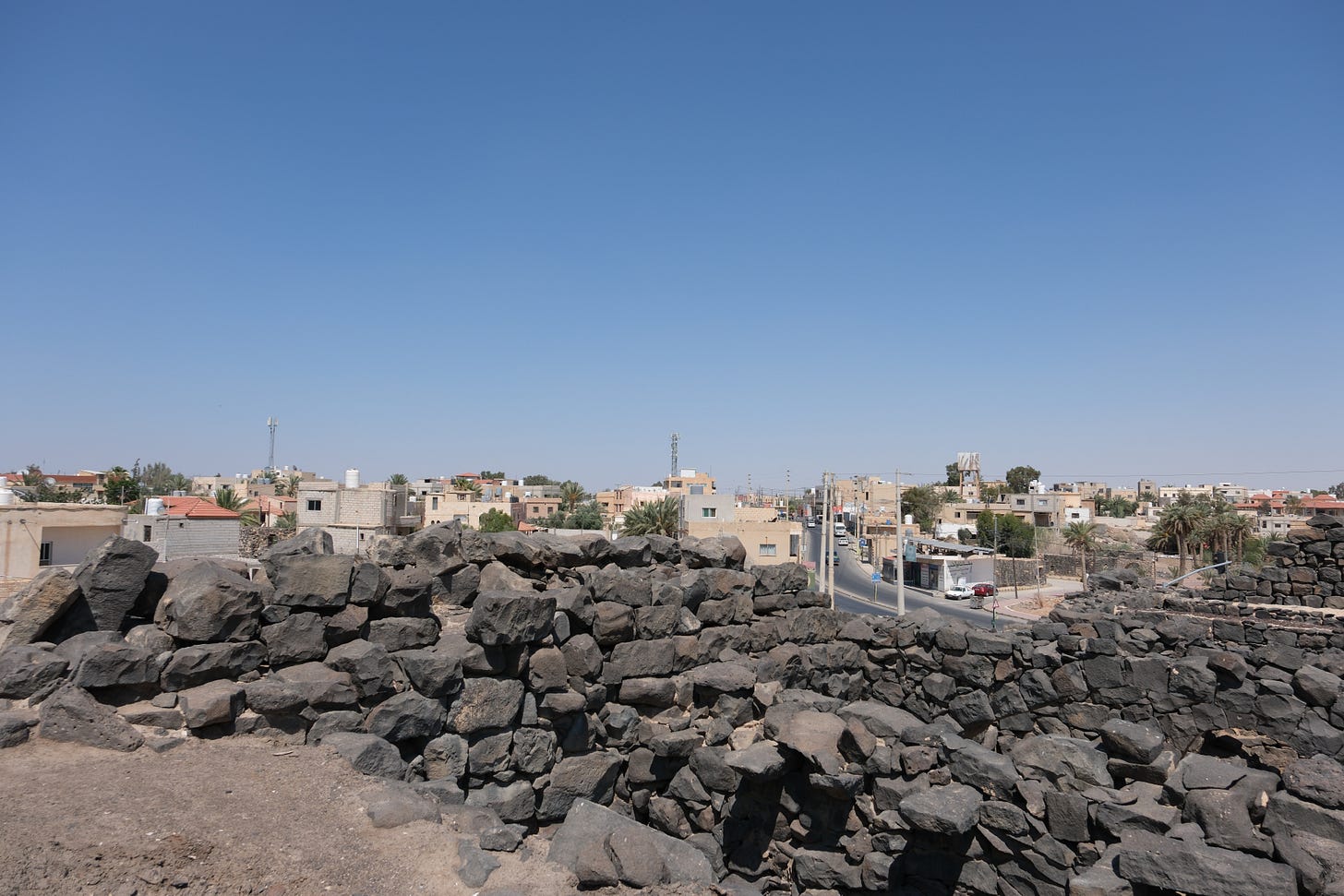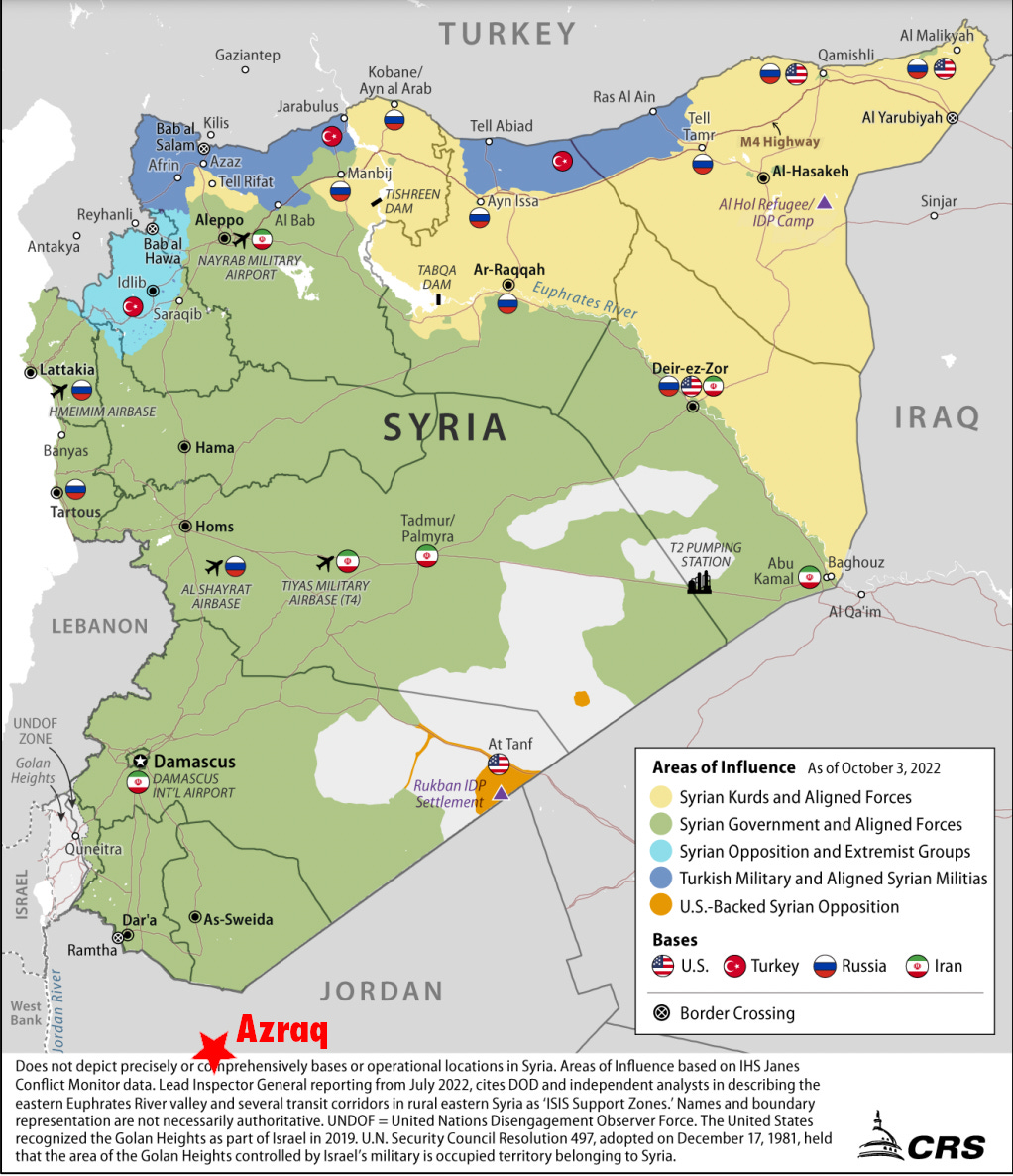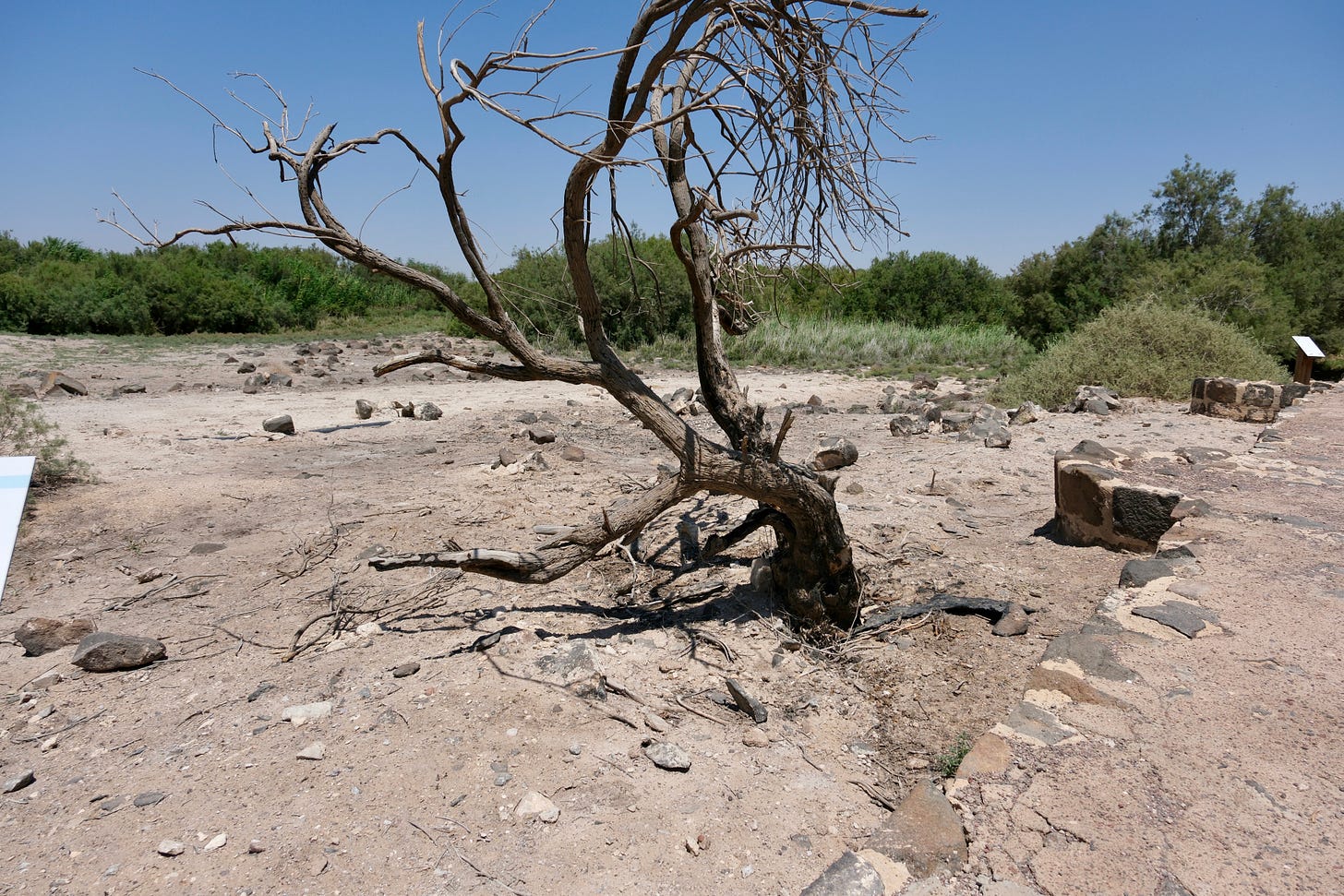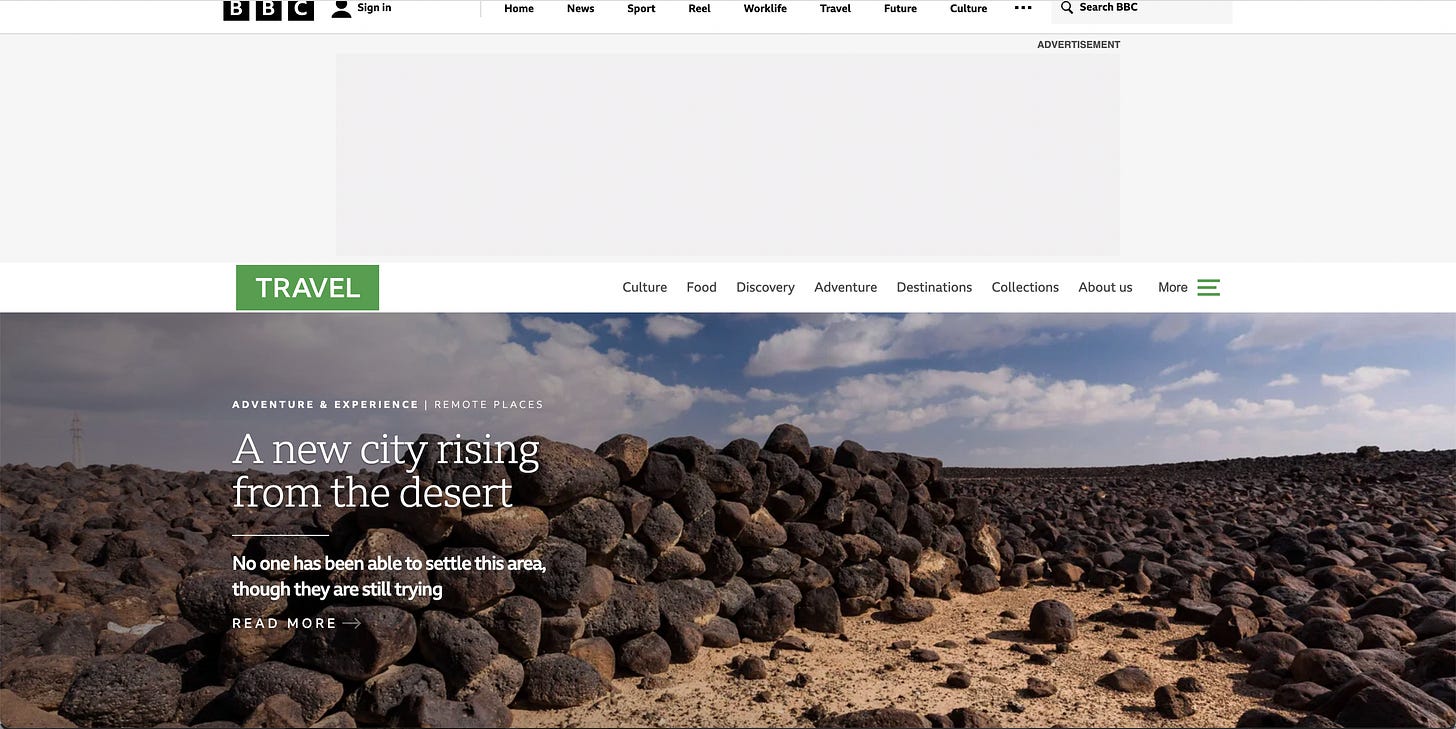Jordan's two-thousand year Forever War frontier
Azraq has been a front line since at least the Roman era: between empires, and against the limits of nature itself.
My colleague Jack Pearson and I wrote a travel report for the BBC on Jordan’s eastern frontier, a “beautiful cursed landscape” on the edge of human habitation, a place haunted by millennia of history.
Jack is a researcher focused on conservation efforts, especially around the Azraq Oasis, and I’m fascinated by the area’s political history. It’s dotted with “desert castles,” watering stations that were first built during the Roman era, expanded during the early Islamic era, and used by every imperial officer who passed through the land since.

I really, really recommend reading the article on the BBC website. Whether you’re interested in ecology or history, you’ll find something interesting. And I really recommend visiting Azraq if you’re ever in Jordan, whether to see rare water buffalo in the swamp or to imagine what a soldier on the Roman frontier might have felt like.
These were the borderlands that the Roman and Persian empires fought over in the seven centuries before the Islamic era. Up north, in the Armenian mountains and along the Euphrates River, imperial armies went clashed directly. Down south, in the desert, the empires played the Arab tribes off against each other through proxy warfare. Until the tribes built an empire of their own.
Azraq is still an imperial proxy war frontier of sorts. And there are still Persian-speaking armies on the other side of it, in Syria. Running parallel to the Jordanian-Syrian border, the Amman-Azraq highway is lined with refugee camps created by the Syrian civil war. Military aircraft fly overhead, presumably on their way to or from the airport in Azraq.
The air base is like a black hole: a massive object at the center of Azraq that allows no information to leave. The U.S. Defense Department has allotted a quarter of a billion dollars for improvements to the base — which is bigger than the town of Azraq itself — but neither Jordanian nor American media report much on it.
A few weeks ago, the U.S. military announced that it was sending F-22 fighter jets to the Middle East “in the wake of increasingly unsafe and unprofessional behavior by Russian aircraft in the region.” According to The Drive, the official U.S. photos show the jets taking off from Azraq and flying in the general area.
Azraq is strategically valuable today for the same reason it was valuable two thousand years ago. And the photo above is a hint as to why. See the channels in the black volcanic rock? They’re wadi (also known as arroyos or dry washes) cut by water. Although rain is rare in the area, all of it — from southern Syria to northern Saudi Arabia — drains towards the Azraq Oasis.
The accumulated water has created a lush, green wetland that sustains gazelles, buffalos, and humans. Azraq used to be the last major town along the desert routes towards Mesopotamia and Arabia. Modern irrigation has allowed human settlement deeper into the desert, but not by much.
Sadly, that modern irrigation is also killing the oasis. Azraq’s groundwater has been completely drained to feed Jordan’s thirsty cities. (I’ve written about the Jordanian water crisis here before.) The wetlands are sustained artificially, by water pumped back in. Even so, they’ve shrunk dramatically. Everything in the photo above used to be underwater.
The BBC article is a call to see Azraq’s beauty before it disappears. And it’s a reflection on the many struggles involving human and natural forces in the region. Every generation has run into the hard limits of the desert, but has managed to leave its mark for every else to see.
Go on, read it!






